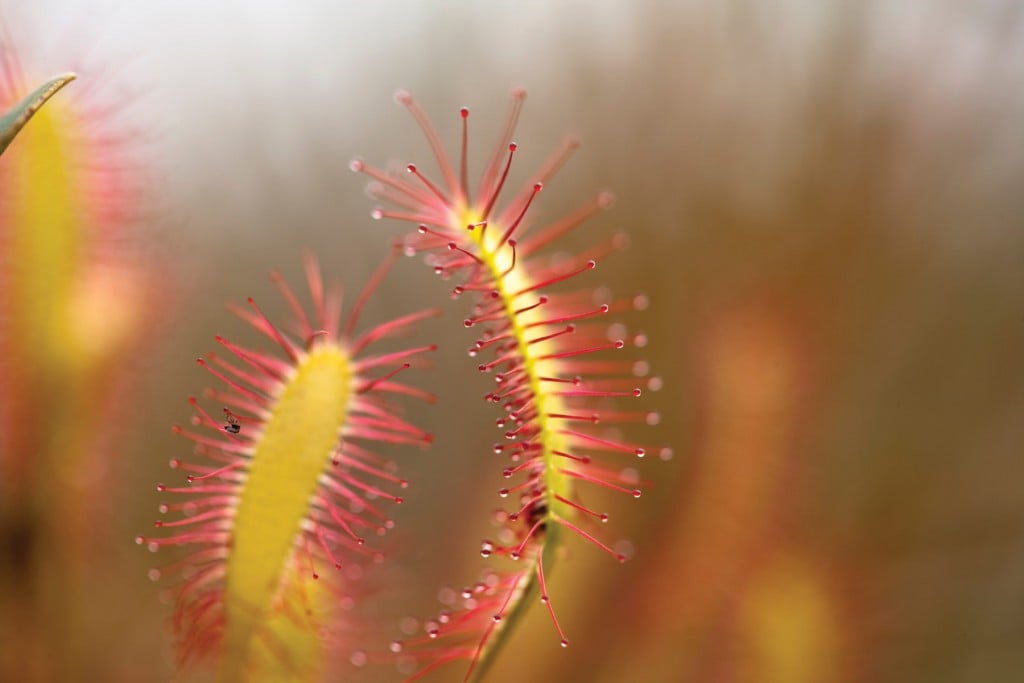Hawai‘i’s Only Carnivorous Plant

Hawaii is famous for many things, not the least of which are its rare plants. It’s well known that most of Hawaii’s 1,200 or so native plants, having found their way here as seeds and spores, lost their defenses over the eons in the absence of predators.
So it’s surprising that Hawaii has a carnivorous plant, mikinalo, which means “to suck flies.” Drosera anglica, Hawaii’s native sundew, is a diminutive swamp dweller, nearly identical to what grows in the bogs of Scotland and England.
In the land of scentless mints and thornless holly, this little plant is Hawaii’s only flesh eater. Globally, sundews are common in the world’s northern high-acid, low-nutrient swamps, but mikinalo is something special.
Sam Ohu Gon III, senior scientist with The Nature Conservancy of Hawaii, explains that mikinalo stands apart from its northern cousins because it has lost the need to overwinter, the botanical equivalent of hibernation. As a result, mikinalo grows year-round in Hawaii.
“This makes them a hot commodity for the International Carnivorous Plant Society,” Gon says, noting that sundew enthusiasts come from around the world hoping to catch a glimpse of this delicate little flesh- eating plant.
Insects are drawn to the plant by what looks like nectar, but is instead a glue that traps them. Tentacles bring more sticky fluid until the creature is covered and then consumed.
Like many indigenous plants in Hawaii, mikinalo is island-specific, found only on Kauai in high-elevation swamps such as Alakai. Because this swamp has a well- maintained boardwalk, it’s one of the best places to search for mikinalo with the lowest risk to the fragile ecosystem.
Gon suggests looking on the edges of small pools of open water. Frequently mikinalo is found among low, spiky green sedges as if “growing between the spines of a porcupine.”
The original boreal sundew was almost certainly carried to Hawaii by a bird, Gon says. And Kauai, as the most northerly of Hawaii’s high islands, was the most obvious landing point for a migrating bird that would have sought a bog environment after a long ocean journey.






